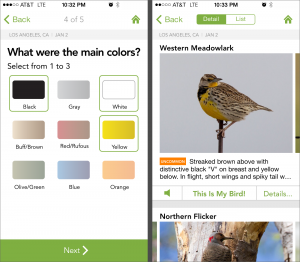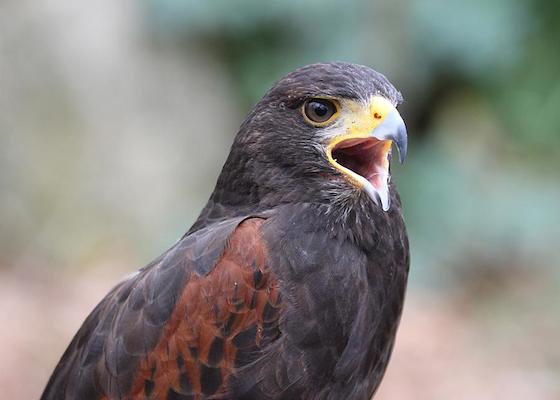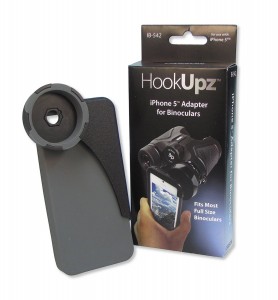If you’re thinking about going on your first bird walk or bird outing here are 8 things you should avoid.
1. Wearing Bright Colors
Bright colors like white amplify movement and make you contrast with your surroundings. Subdued earth toned are best. Birds see more color than we do (even UV) so they’ll be sensitive to colors that far contrast what they are used to seeing.
2. Making Loud Noises
Remember to silence your cellphone (if you even have service!), and keep loud talking to a minimum when necessary. If you are trying to get a good shot or spot a bird that’s close-by, you don’t want to scare it away. You’ll eventually get shushed by other birders if you’re a jabber box. This is less important when viewing birds at far distances, like most water birds.
3. Getting too close/leaving the trail
Look at yourself from the bird’s perspective: if people were coming into your habit and getting uncomfortably close, you’d probably feel the urge to fly away. Have this in mind when you’re on a bird walk. Keep a necessary distance from birds you’re watching to avoid startling them and scaring them away. It is awfully tempting to get closer and closer if you are trying to get a good photo—if you do need to get closer for identification purposes, move slowly and avoid sudden movements.

4. Not taking notes, leaving a field guide/reference app at home
Taking notes, either on your phone or in a small notebook, can be a good habit to help you remember bird species. With the BirdLog app, I’ll sometimes write down what birds are doing or where specifically I spotted them as I add them to my list in the app. Noting a feature of their look or behavior (such as the tail-pumping of a Black Phoebe) will help you better identify that bird in the future.
 Keeping a field guide, or bird reference app on your phone handy is recommended. I recently got the Birds of Southern California, it has a handy section at the front of the book with thumbnails of the most common bird species, that is useful to refer to before I dig through the index. I use this book to look up species that other birders call out that I didn’t get a good look at, so I can see a clear photo, or to use to spot it myself. It highlights easy identifiers in bold and the photos are of high quality.
Keeping a field guide, or bird reference app on your phone handy is recommended. I recently got the Birds of Southern California, it has a handy section at the front of the book with thumbnails of the most common bird species, that is useful to refer to before I dig through the index. I use this book to look up species that other birders call out that I didn’t get a good look at, so I can see a clear photo, or to use to spot it myself. It highlights easy identifiers in bold and the photos are of high quality.
A new favorite app to assist with identification is Merlin Bird ID by Cornell Lab of Ornithology. It is an amazing app that pulls your current location, asks you a few simple questions about the bird you are observing: color (pick up to three), size (on a scale of sparrow to goose or larger), where it was spotted (ground, feeder, water, flying, etc.), then it runs algorithms using eBird data to guess what type of bird it is. The more you identify birds the smarter the app gets for everyone!
5. Making Inappropriate Noises (predator bird calls)

With all of these bird reference apps that are available you should be wary of how you use them. There are apps that provide sound clips of bird calls and songs. Usually it isn’t a problem if you play these sounds while out in the field, it even sometimes causes birds to appear or move around a bit, I’ve seen some birders do this on occasion. But, never play bird calls that are from birds of prey; this can stress out smaller birds or cause them to flee or become silent, this may go without saying, though I want to mention it anyway.
 Many more-advanced birders make birds calls or whistle/click sounds with their mouth to “flush” birds or attract them to get a better view. I am still unconvinced that this actually works, but you’ll see it often. I have friends who aren’t very good at doing these sounds yet (for lack of practice), so I recommend they pick up an Audubon Bird Call ($9.95). These clever little instruments will make all sorts of chirping and squeaking noises with just a twist, you will find that birds will show up to check out what all the noise is.
Many more-advanced birders make birds calls or whistle/click sounds with their mouth to “flush” birds or attract them to get a better view. I am still unconvinced that this actually works, but you’ll see it often. I have friends who aren’t very good at doing these sounds yet (for lack of practice), so I recommend they pick up an Audubon Bird Call ($9.95). These clever little instruments will make all sorts of chirping and squeaking noises with just a twist, you will find that birds will show up to check out what all the noise is.
6. Forgetting the binoculars at home or in another car
I’ve done this more times than I would like to admit. You are in a rush, groggy from waking up early (number 5, remember?), and ready to hit the road. You’re in the car halfway there and it hits you, you forget your binoculars at home or somewhere else! Don’t do this! Trying to go birding without binoculars will easily spoil your whole experience, looking a birds through your camera zoom or asking to borrow a pair of binos is not an ideal situation. Most birders—especially from the Audubon will be glad to lend you a pair of extra binoculars, but always be prepared!
7. Worrying too much about your camera gear
Bird photography can get extremely expensive extremely fast. Before you part with boatloads of cash buying ever-fancier lenses and camera bodies (lucky rich person, you), refine your technique and approach to wildlife photography and make sure it ‘s something that you are super serious about. You can even practice digiscoping, which can yield amazing photos provided you have some patience and a steady hand. I use a special case for my iPhone 5S called Hookupz that allows me to attach my iPhone to a pair of standard binoculars or to a spotting scope. The case immediately aligns the “sweet spot” of the lens and helps get a super close-up shot of a bird I’ve spotted. Without this case, it is extremely difficult to get the phone camera to look through the scope without extreme vignetting.
‘s something that you are super serious about. You can even practice digiscoping, which can yield amazing photos provided you have some patience and a steady hand. I use a special case for my iPhone 5S called Hookupz that allows me to attach my iPhone to a pair of standard binoculars or to a spotting scope. The case immediately aligns the “sweet spot” of the lens and helps get a super close-up shot of a bird I’ve spotted. Without this case, it is extremely difficult to get the phone camera to look through the scope without extreme vignetting.
8. Going birding at the wrong time of day
The first time I ever decided to go birding, we headed at 3PM out to a hiking trail and looked around. We heard a few things, saw a few things, but mostly nothing. Why was that? It was in the middle of the day.
Bird watching is best done early in the morning; that is when birds are most active out looking for food and water. If you love shore birds (like Tom does), you’ll want to go birding when it’s low tide—that is when the birds will be out running around catching food. Many birds like to go “sunning,” that is when they will spread their wings or plumage to get as much sun as possible. I’ve only seen a Turkey Vulture do this, but other birds too it too, so you’ll see that more frequently on sunny days.
Have fun birding!

